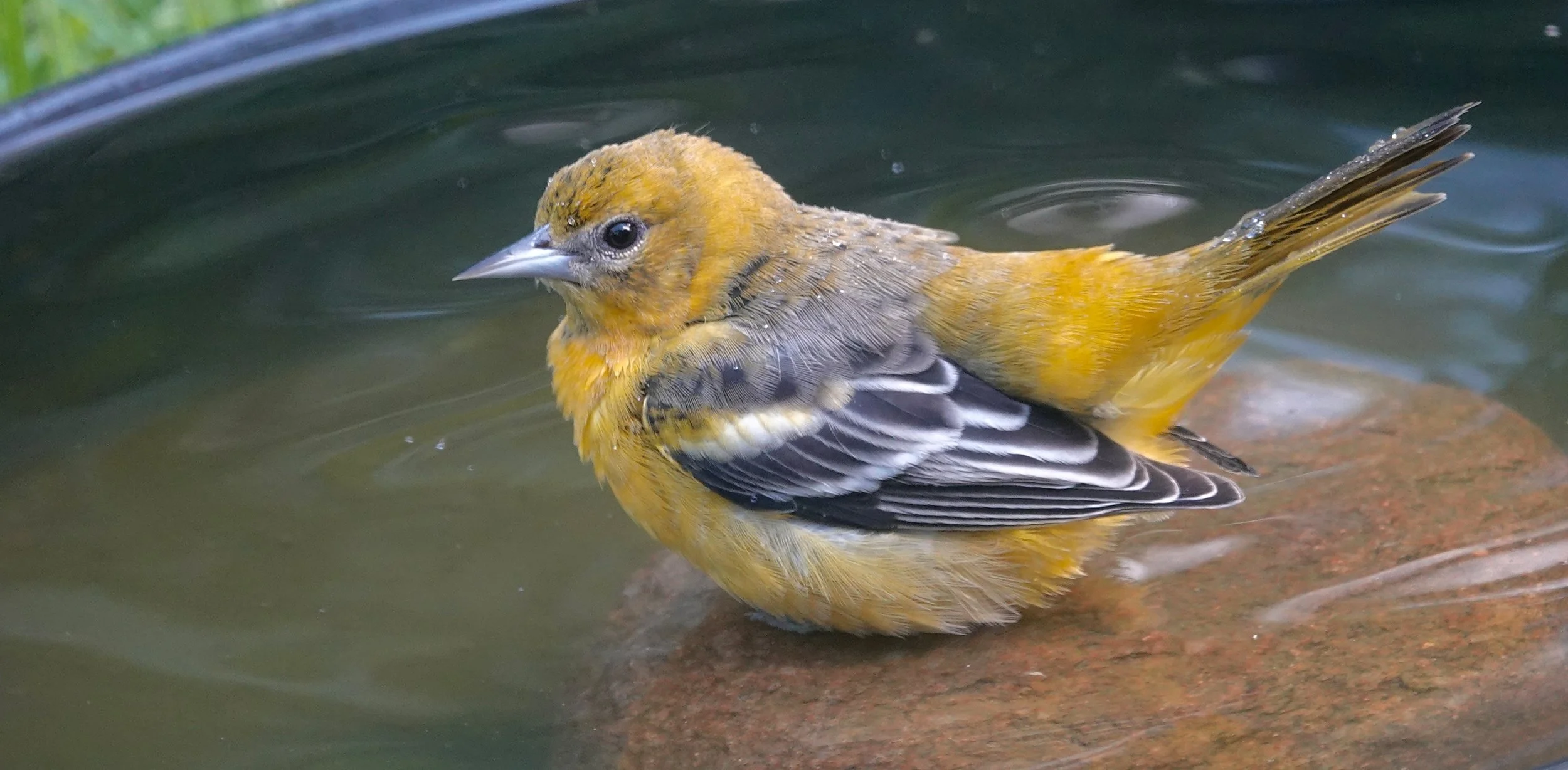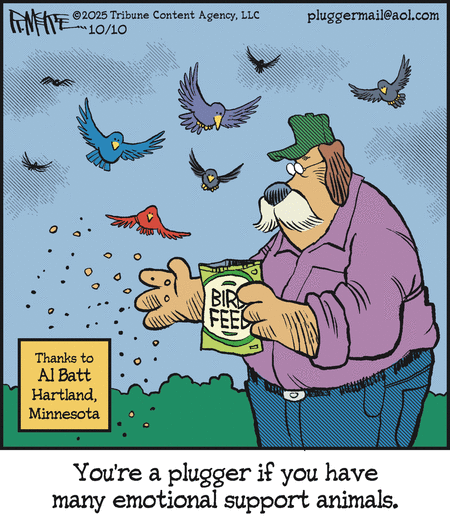Naturally
I have a lot of feathered friends. I’m not on Facebook and neither are my avian amigos. I don’t get a single Christmas card from a bird, even though their images are on many of those cards, especially cardinals and chickadees. How do I befriend them? I feed and water them. I grew up with livestock—I fed and watered cows, pigs and poultry. In return, the yard birds keep me company and feed my soul.
I had a pleasant visit. The adorable goldfinches were busy at the sunflower feeder. They fed frenetically while keeping their eyes out for predators. There’s a song that goes, “Wish that I were a yellow bird I'd fly away with you But I am not a yellow bird So here I sit, nothin' else to do.”
I watched a blue jay gobble 27 black-oil sunflower seeds in a single visit. They have a throat sac called a gular pouch, which they can fill, and then cough up the seeds later to eat or hide. A naturalist wrote about observing the blue jays in his backyard and found several snatched up 70 or more sunflower seeds before flying away. One jay packed over 100 sunflower seeds into its gullet during one visit to a feeder.
Crows mobbed an owl during the day in an attempt to keep the owl from getting its beauty sleep.
Q&A
“When do vultures leave Minnesota?” Teetering turkey vultures and their wobbling flight and their wondrous soaring ways migrate from late August to early November, traveling to the southeastern U.S. and Central America.
Miriam of St. Paul sent a photo of a black squirrel flattened on a step and wondered why the odd behavior. The act of an animal spreading itself flat on the ground is called splooting or pancaking. This is a common and normal behavior used for heat dumping. They press their thinly furred bellies against a cool surface, like a shady patch of ground, concrete or a cool tree branch, to transfer heat from their bodies.
“What is the highest-flying bird?” The Rüppell's griffon vulture was documented flying at an altitude of 37,000 feet when it was struck by a plane in 1973.
“What are peeps?” They are marshmallow confections, but other than that candy, there are flying feathers known as peeps. Peeps is a birding term for several species of small sandpipers. These birds are characterized by their small size, brownish or grayish-and-white plumage, pointed black bills, and a habit of feeding in flocks on mudflats. Common examples of peeps include the least, semipalmated, western, Baird's and white-rumped sandpipers.
A Stewartville reader asked if he put lutefisk outside, if it’d attract vultures. I can’t say for sure, but I’m guessing it would. They eat rotting carp, so lutefisk should be a delicacy in comparison.
“What bird is the most common one seen at feeders?” According to the Cornell Lab of Ornithology, the dark-eyed junco is typically the most common feeder bird in North America, as determined by data from Project FeederWatch.
“What is the biggest bird and what is the smallest bird?” The ostrich is up to 9 feet tall and weighs as much as 300 pounds. The bee hummingbird is 2.3 inches long and weighs .08 ounce.
“When do barn swallows leave us?” August is the peak fall migration for barn swallows over much of Canada and the US. Barn swallows become hard to find over the northern part of their range in September.
LaVonne Kalke of New Richland asked why there are so few birds in her yard in late September and early October. The multicolored Asian lady beetles ate them all. That’s not true. I kid because I love. Many birds follow their food and migrate. The populations of insect-reliant species like warblers, vireos and flycatchers have been significantly reduced. Many songbirds migrate at night to avoid predators and take advantage of cooler, calmer air. Some species of birds that migrate during the day include pelicans, hawks, falcons, hummingbirds, swifts and swallows. Natural food sources like berries, seeds and late-season insects are abundant, so birds don’t need to rely on feeders. Resident birds become less vocal with no need to attract a mate or defend a territory. Hardy birds like chickadees, juncos, goldfinches, cardinals, blue jays, nuthatches and woodpeckers will become more active at feeders as the weather gets colder.
Thanks for stopping by
“A person without a sense of humor is like a wagon without springs. It's jolted by every pebble on the road.”—Henry Ward Beecher.
“Every breath is a sacrament, an affirmation of our connection with all other living things, a renewal of our link with our ancestors and a contribution to generations yet to come. Our breath is a part of life’s breath, the ocean of air that envelopes the earth.”―David Suzuki.
Do good.
©️Al Batt 2025
This was one of the last of the Baltimore orioles I saw in my yard this year. They migrate to Florida, the Caribbean, Central America and the tip of South America, where they spend the winter reflecting fondly upon our friendship. Photo by Al Batt.


